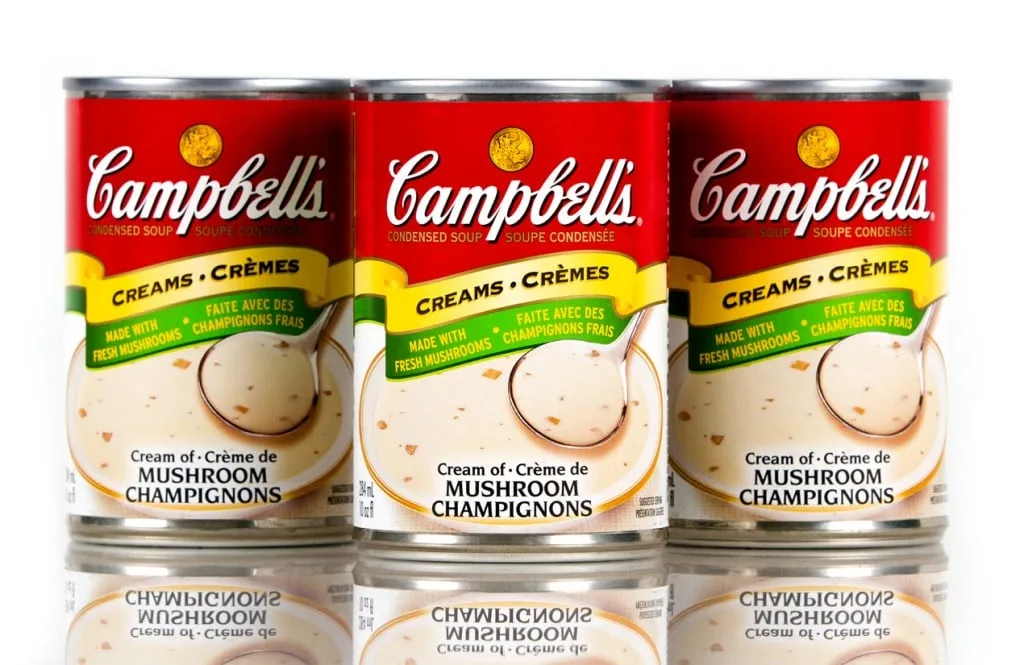Nothing is more certain to rile up a group of Midwesterners than talk of Minnesota hotdish.
This beloved dinner table staple is customizable, delicious, and easy to make. And while we might consider it decadent by today’s standards, it originated in one of the leanest times in U.S. history.
Ready to learn more about what makes Minnesota hotdish so hot?
Let’s dish!

What Are the Ingredients in Minnesota Hotdish?
The ingredients in Minnesota hotdish vary depending on who you ask. Every version contains some combination of a few different elements. Meat, vegetables, and starch are the three main components. But beyond that, no two are alike.
You’d be hard-pressed to find two similar recipes among Minnesotan families.
Traditionally, this food uses canned soup as its base. You can use fresh veggies, but canned or frozen ones are more authentic. Ground beef is a common choice for protein, although some feature chicken, tuna, turkey, and pork.
And while you can use any starch you like, the classic Midwestern macaroni brand, Creamette, is the gold standard.
Another standing rule is the dish itself. To qualify, the meal must be oven-heated in a single casserole pan. But it’s probably unlike any other you’ve had.
What Is Lutheran Binder?
Cream of mushroom is the canned soup traditionally used in Minnesota hotdish. It provides the food with an earthy, robust flavor, and it’s also an excellent thickening or binding agent. The soup is so commonly associated with this regional favorite that it earned its own nickname, Lutheran binder.
You can trace it to potlucks thrown by churches across the state. After first appearing in the early 20th century, it was instantly embraced by home cooks. With deep flavor and binding properties, it became one of the original building blocks of this regional delicacy.

When Was Minnesota Hotdish Invented?
Minnesota hotdish first appeared during the Great Depression. At the time, it was a struggle for many to feed their families with limited fresh veggies and meat. It became a tasty, creative way to provide nutrition for large groups of people.
The first known appearance comes from a Grace Lutheran Ladies Aid cookbook from the 1930s. Mrs. C.W. Anderson authored the recipe and included ground beef, celery, peas, onions, canned soup, and Creamettes.
However, food was scarce during the Great Depression. There was no guarantee that everyone would have access to the same ingredients Mrs. Anderson called for.
As more cooks began preparing it, they created unique versions with what they had on hand. Since then, the family favorite has continued to transform.
This Midwest favorite’s ingredients change with the times. For instance, shredded potatoes were common before the 1950s. Eventually, frozen tater tots took their place and remained a popular topping.
Did you know? Voyageurs is Minnesota’s One and Only National Park
Why Do Minnesotans Call It a Hotdish?
When you think about it, Minnesota hotdish is really just a casserole. So, where did the term come from?
No one really knows the answer to that question. As we mentioned above, Mrs. Anderson’s recipe was the oldest written version. Whether cooks used it before then is a mystery.
What everyone in the Midwest does know is that it’s not just any old hash. For many folks, the dish symbolizes not just their home state but also family, community, and personal identity.

Is Minnesota Hotdish Served at Funerals?
There’s no wrong time for delicious food. Birthdays, weddings, and graduations are just a few occasions that call for big meals. And while funerals aren’t as fun as these other events, folks still gather around the table for them.
Minnesota hotdish is one of those special items that has a place on every table. You can celebrate with it just as easily as you can mourn. It’s perfect for a crowd since you can use as big a dish as required.
It’s also simple and calls for inexpensive ingredients, making it an ideal undertaking for busy or cash-strapped home cooks.
Discover: Prince’s Minneapolis from Paisley Park to First Avenue
Are Hotdish Competitions Popular in Minnesota?
As we mentioned earlier, all versions of Minnesota hotdish are unique. Every family has their own personal take on this classic. That’s why competitions are popular in the region.
You’ll find community contests all over. Folks bake their very best versions, which a panel of judges tastes. At many of these competitions, the winners get to share their recipes with the community.
Since the only rules are to include meat, starch, veggies, and a binding agent, the variations are fun and nearly endless.
This iconic meal is so beloved that it even made it to Washington, D.C. For many years, congressional representatives from the Land of 10,000 Lakes held their own annual cookoff.
Sadly, this competition went defunct sometime after 2016.
Try some recipes! The Great Minnesota Hot Dish: Your Cookbook for Classic Comfort Food
Cook Up Your Own Minnesota Hotdish and Fall In Love!
Before you write off Minnesota hotdish as just another casserole, think again. This delicious entree is more than just a one-pan wonder. It’s a testament to the creativity and resilience of Midwesterners everywhere. Dig up a recipe and give it a try.
Or better yet, add Minnesota and Wisconsin to your travel bucket list. Then, you can taste this iconic food at its most authentic.
We’ll Help You Find the Best Free Camping in the USA
You should give it a try!
As a matter of fact, these free campsites are yours to enjoy. Every time you pay federal taxes, you’re contributing to these lands.
Become a FREE CAMPING INSIDER and join the 100,000 campers who love to score the best site!
We’ll send you the 50 Best Free Campsites in the USA (one per state). Access the list by submitting your email below: